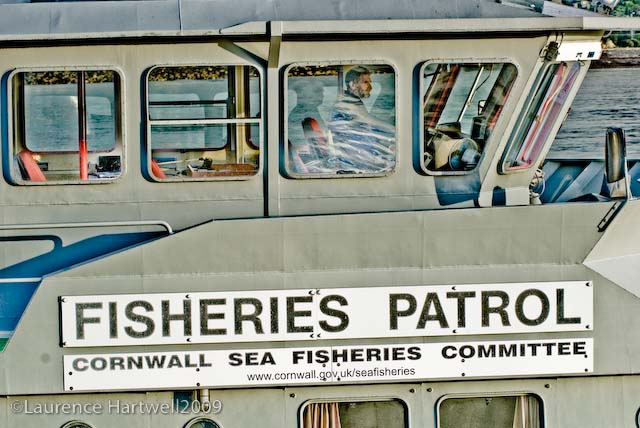Blogging at the end of a day's work aboard the research ship Tridens keeps fishermen in the picture with regard to research being carried out that could one day impact on fishing opportunities. The Dutch research ship is currently making a survey of blue whiting stocks off the west coast of Ireland, from the Porcupine Bank up to Rockall. A second, Russian ship should have joined the survey earlier but has been delayed by poor weather. Survey work is likely to be further delayed tonight with a deep low making a pass across the area over the next twenty four hours as the latest blog post indicates.
The ship is run by IMARES (Institute for Marine Resources and Ecosystem Studies) is the Netherlands research institute established to provide the scientific support that is essential for developing policies and innovation in respect of the marine environment, fishery activities, aquaculture and the maritime sector. The ship has a page on the IMARES site here.
CEFAS currently run one of the most modern survey vessels in the world, the CEFAS Endeavour. It would be good to see one of our own survey vessels - one of the most important in terms of fisheries research in the UK make its work as public and readily available as other fisheries research teams. Several members of the crew aboard the Endeavour are, in fact, local ex-skippers from Newlyn.
Good communications are key to creating an open dialogue and in an age of 'transparency' at the heart of public service. A flow of information and comment between the work of CEFAS, which has done much to create a more positive working relationship with the fishing industry, and the industry could help reduce what seems ever increasing pressure to justify every aspect of fishing operations can only be for the good. On the IMARES site there is a statement of intent which cites how they have cooperate with Dutch fishermen in the North Sea beginning with the F Project in 2002 - this eventually led to the formation of a platform for Collaborative Research in 2008 involving representatives from the industry, managers and scientists. Today, they use the VMS system to track the entire Dutch fleet in the North Sea in order to help build up a picture of fish stocks and fishing effort with the full support of the fleet.
It would be good to see our own research effort become as interactive as the Dutch in the hope that decisions on the future of fishing have even more input from those who are affected by the research carried out on their behalf - the fishermen. These days the technology exists to allow interaction between ship and shore as never before. The is the latest information online regarding the most recent survey work carried out by RV Endeavour. Links to the entire fisheries research programme are on this page and include the beam trawl survey for Dover Sole that began aboard the Bogey 1 in 1984. CEFAS are able to respond to requests from the industry over what to survey and are currently limited to funding from the Government of £1million per annum.



























